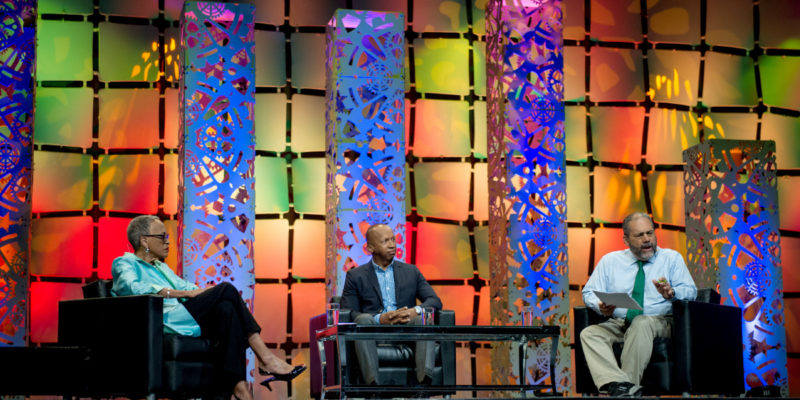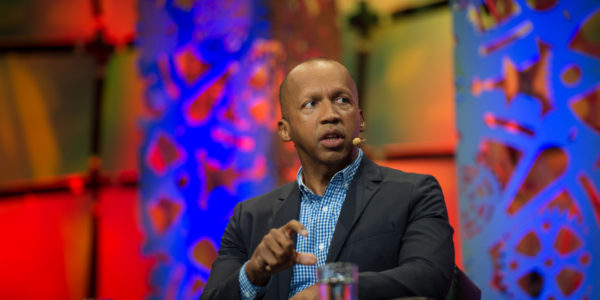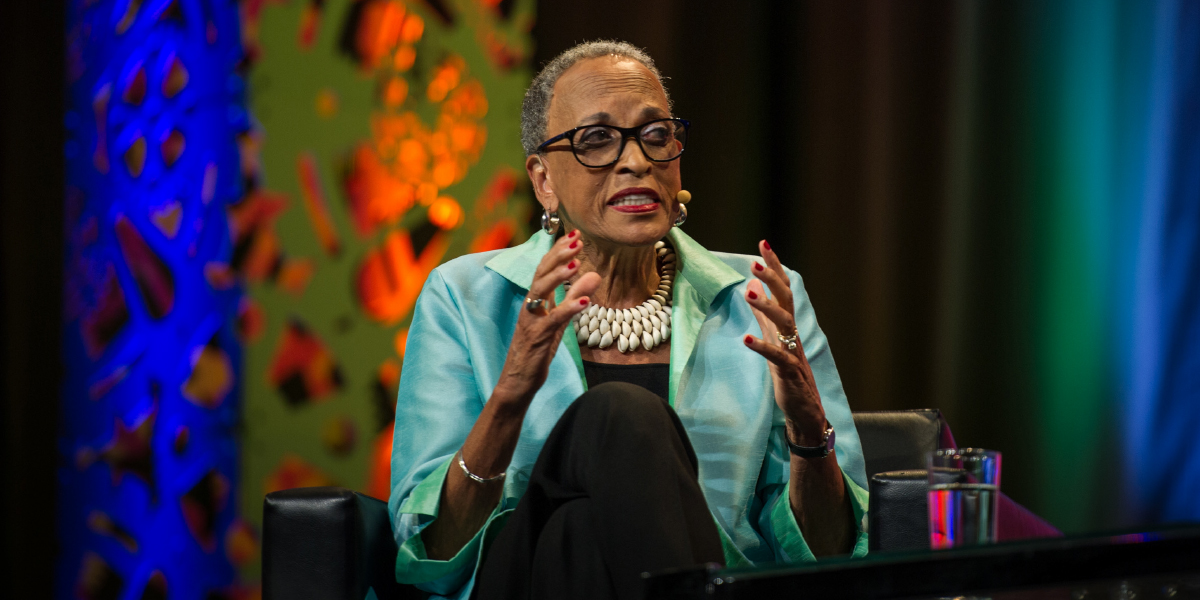Diversity and inclusion are everyone’s business,” asserted Mary Ontiveros, co-presenter of the webcast, “The CBO’s Role in Diversity and Inclusion on Campus.” Ontiveros, vice president for diversity, and associate vice president for enrollment and access at Colorado State University, joined Gerald Hector, vice president for financial affairs at Cornell University, to launch NACUBO’s first in a series of professional development offerings focused on diversity and inclusion—and the CBO’s related roles and responsibilities.
With chief business officers playing an important role in the president’s cabinet, they are involved in many conversations about the campus as a whole. While the scope of the CBO’s duties focus mainly on financial issues, the position often touches areas that are related to changing demographics and dynamics, management of buildings and grounds, human resources issues, and campus safety and security. Recent student demonstrations, the need for campus safe places, and much more, shed light on the need for increased dialogue and action for all campus leaders.
Hector and Ontiveros speculated that “a tsunami of diversity and change are coming our way,” in part because of what Ontiveros called the “browning” of high school graduates that promises to intensify the challenges on campus. “Yet, we have all run into the house, away from the storm,” she said. How can institutions prepare for this tsunami? She advocates that, somewhat like Nike’s slogan, “Just do it now.” Hector provided an example of doing that work by encouraging courageous conversations. “At Cornell,” he explained, “we’ve initiated weekly lunch discussions about various elements of inequality and ways to address it.” Hector and Ontiveros agree that one role the CBO can play is to “start the conversation.”
NACUBO followed its conversation starter on the challenges impeding diversity and inclusion with a general session at the 2016 Annual Meeting in Montréal, “A Dialogue on Diversity.” Featuring journalist and speaker Ray Suarez; formidable leader in education and the arts Johnnetta Cole; and unrelenting activist and lawyer Bryan Stevenson, the three-person panel reflected on the importance of understanding our differences, how higher education institutions can better embrace their diversity and inclusion issues, and the power of education to influence that dialogue and its impact. Read some of the highlights of the discussion and follow-on conversation in the pages that follow.
To further dig down into the impact of campus unrest resulting from students’ sense of inequality and discrimination, NACUBO invited Janice Abraham, president and CEO of United Educators, to interview two campus leaders who deal directly with such turmoil on a regular basis. As a trustee for two independent institutions, Abraham’s questions include what role governing boards might play in addressing student concerns. In the following “On Balance” interviews, Felicia McGinty, vice chancellor for student affairs, Rutgers, The State University of New Jersey, describes the importance of proactively engaging students; and Mary Ontiveros, vice president for diversity, Colorado State University, details her institution’s strategy for building an inclusive community.

The Equality Equation
During the Diversity Dialogue at the NACUBO 2016 Annual Meeting in Montréal, well-known leaders of color articulated strong opinions about the state of college campuses and that of larger society. Informed by painful, discriminatory experiences in their own lives, panelists’ comments focused on persistent inequality and ways that education can guide a more just future.
“To be black or brown is to live in an environment of danger and guilt,” explained Bryan Stevenson, African-American lawyer, author, and unrelenting activist fighting for freedom for prisoners wrongfully incarcerated. “It’s exhausting to be the one being perceived as a danger to society. So, when you get to campus and see no relief, it compromises your feelings of hope.”
Responding to a question from panel moderator Ray Suarez, Hispanic journalist, author, and speaker, Stevenson went on to say that much of society “is complicit in the great lie that we are a great country. We deny our history of slavery and segregation.”
Johnnetta Cole, museum director, anthropologist, and former president of Spelman College, Atlanta, and Bennett College, Greensboro, N.C., added, “Because we do wrong doesn’t mean we can’t do right. However, higher education institutions have engaged in bigotry by way of a curriculum that I refer to as the three Ws: Western, White, and Womanless. The messages historically presented in textbooks and through interactions on campus invariably lift up and promote white men. Still, that doesn’t mean that we cannot change.”
Cole went on to say that she spends most of her time in the art world, where museums attract visitors of whom only 9 percent are people of color.
“But, we can learn from the corporate world,” she said, “in that businesses must make these changes—to attract diverse consumers—in order to continue to be profitable. If our higher education institutions do not change to prepare students to live in a world that is complex and diverse, people will say that college is worthless.”
Untapped Talent
“We can certainly do better,” said Stevenson. “I live in Alabama, where college football is a form of religion. People think about athletics all the time. When some of our schools put black players on the field, the team usually performed much better. So, basically, universities in the South wanted to win more than they wanted to discriminate. This example shows that we must do better in understanding the strengths and abilities of others—and applying that to some of the decisions we make.”
Suarez responded by saying that numbers seem to move things along when nothing else does. “The argument for doing something different, or our society will be the poorer for it, can be supported by the fact that only 10 percent of Latinos have a college degree, yet by 2025, if growth of this demographic continues as before, the country will be home to 135 million Latinos.” At our current level of college completion, said Suarez, this equates to a huge amount of underutilized talent.
“I often think that the most important document that citizens can read is the U.S. Census,” said Cole. “Seeing that amount of diversity in our country, we cannot afford racism, homophobia, or sexism. Of course, that’s easy to see, but how do we teach it and make that a part of what we ingrain in ourselves and our culture’s belief system?”
Educate to Ameliorate
“If we are going to change,” contended Stevenson, “we need to educate a generation that makes things better. Constant tension about race and inequality all gets visited on the narrow shoulders of our college students.”
Also, said Cole, “If we look at PhDs, engineers, lawyers, who are black, the overwhelming percentage earned their undergraduate degrees at a historically black college/university (HBCU). They feel ‘safe’ there. I live for the day when we do not need special interest colleges, but we are still very far away from the day when any student of color can feel safe, affirmed, and receiving the best possible education.”
Suarez admitted that: “As a Hispanic, I was ready for a world that was not ready for me. The callousness I experienced served me well. When you create a safe space—are you really preparing that student for the differences and divergences that they will face out in the world?”
Stevenson reminded the audience that “history is not irrelevant to what you/students are about to do. And, I’m not referring only to people of color. We all stand on the shoulders of people who fought and bled and died. If we are not talking about the barriers to equality, we still need to be prepared to fight to make the world more just—use it, take it, do it.”
“I worry about the individual kids,” said Suarez, “who feel that they need to stand up and be counted, while many are working many hours a week, with less and less family support. They have such important business to do—get out, get work, earn a degree, pay off loans.”
Stevenson noted that it’s a mistake to equate justice with demonstrating—“students need to maintain their priorities.”
While the spotlight is on protesters, said Cole, when an individual student at a water fountain says ‘What you just said is harmful, please think about what you say’—that’s a social justice soldier who calls someone out. So are faculty, CBOs, and other administrators who take on this role.”
How do you make all of this right? asked Suarez. “We ask the CBO ‘alchemist’ to turn aluminum into gold. As business officers, you have heavier challenges and burdens of compliance—shaking the trees for money—it’s a complicated dance; we ask that you throw it all out there to change our social problems. It’s a difficult set of assignments.”
“We can keep replaying the stories the same way again and again,” said Stevenson. “But we need to do things that we’ve never seen before. I would not be here today if my grandmother had not spoken into my ear, saying that there is nothing more honorable than to experience education.”
Cole added: “The other responsibility is to help individuals know that they can make the world better through knowledge and achievement. Individuals who connect those two elements will better understand and know the world.”
Suarez pointed out, “That hopeful notion is not always shared by many of the people who are paying tuition—or who pay their taxes.”
Cole countered with the notion that skepticism is certainly a daily reality. “My alternative,” she offered, “comes in the form of a question: How in the world do we make change? We have to educate and agitate. We are continuing to teach people racism, homophobia. If we more consciously think of how we educate, we would create enormous change in our country.”
Suarez concluded, “We have a big job ahead in entrenching a common purpose and a common wisdom.”
Continuing the Conversation
In a follow-on session, the panelists invited the audience to join them in further explaining diversity issues and to feel free to question or comment. Suarez began by considering the idea that perhaps it is only an institution leader, with the ability to move the ball, who gets to initiate questions related to diversity and inclusion. “That sometimes comes only when you are at a certain level on the food chain,” he explained. “It’s fine to urge that the right things get done, but sometimes you need to have the power to make them happen—but it means you have to take some risk and step out.”
Cole’s opinion differed: “If we really accept that only leaders can force change—if that is our position—then we will be at this for a very long time. Change happens only when people at every level become involved. We have seen what can happen when employee resource groups (Hispanics, LBGTQ, women) come together as ordinary people. While we may have too many leaders who are not going to lead—millions of people at all levels of society can be involved such that change is coming from top to bottom and at every level between.”
Panelists agreed that a major issue in the diversity and inclusion world is that we really think that we can relate to each other, but we have so many different identities.
Suarez noted that there need to be other ways that we can get together. “The notion that when you walk into a room, you have to gird you loins against people—none of whom believe as you do—this cuts off the access to wider dialogue.”
An audience participant from Georgia Tech recommended that one way to bring people closer together is through coalition building. “We can’t talk only to people like ourselves; we must come together around our humanness. At Georgia Tech, we are creating groups and encouraging positional leadership. You get a certain amount of aerodynamic lift when energy comes from the bottom.”
Cole brought up another angle: “We all have multiple identities and should acknowledge that we cannot capture who we are in one identity—I can be the victim of oppression, or I can turn around and oppress someone else. What I find so hopeful, and at the same time disturbing, is that understanding requires us to ask—on what basis am I victimized, and on what basis will I be the victimizer?”
Suarez noted that high schools have the opportunity to provide experiential learning—bringing together diverse students and hearing about where they come from, what they’ve experienced, and stories they can share.”
Cole offered another view: “I believe that human talent is widely distributed, and you’ve got to wonder about the pipeline that is delivering all the same kinds of people to the good, desirable jobs.”

Suarez optimistically said, “I’d like to be hopeful in thinking that some of these issues will be resolved simply because they need to change. As has happened with gay marriage in our country, we may not be as far from our goals as we think.”
Stevenson was less hopeful: “I feel so deeply, because we live in a time that we need to really improve justice. I’ve seen our country move in some troubling directions. We had six million people on parole, in 2015. We’ve done some terrible things. We’ve had a 640 percent increase in incarcerations; 70 percent of women in prison are single mothers with children with nowhere to go. A full 31 percent of the male population of Alabama is no longer able to vote.
“I suggest that there are things that we can all do on our campuses to move things forward,” he continued. “If we want to create justice, we must get proximate—to get close enough to the problems in order to solve them—or we will not understand the pertinent details. There is power in proximity. You don’t need to be totally prepared before you get near. If it’s a part of town where there are drugs, poor schools, abuse, and addiction—we tend to avoid it and stay away. In making myself proximate to people on death row, I’ve found the opportunity to make a difference. We incarcerate thousands of children. We create a distance between ourselves and these most-vulnerable children, in this schoolhouse-to-jailhouse situation. We have some instinct to demonize the children; some call them ‘superpredators.’ We must create portals to proximity so that people can really feel and understand the plight of others.”
Also, to change the narratives, we must talk about race, said Stevenson. “When we are constrained or limited by our history of racism; we are really not free. In a post-genocide society, we have to acknowledge this in order to recover. The opposite of poverty is justice. When we achieve justice, that is when we can change the narrative. It’s vitally important that we have these conversations about diversity and inclusion, particularly on your campuses.”
Suarez noted that we are pushing back at a force that has been strengthened over the past 30 years. “We have created a system in which you are the worst thing you’ve ever done. We have to undo that before we can rebuild.”
Stevenson reminded that we are also a religious country. “It’s not a foreign concept that there ought to be a way to recover (or be forgiven)—you have to forgive. But, our system is punitive. Poor, unemployed people are called murderers, killers, freeloaders. I’m not interested in punishing America for our country’s guilt—but if we own up, there is room for redemption. We have implemented mass incarceration for drug possession; in other countries, addiction is treated as a health issue. We, however, do not treat drug addiction and alcoholism in this way.”
The sad thing, said Suarez, is that we are willing to retain these ideas, even though we know that they are not correct. “Even when we realize that high incarceration rates and recidivism simply don’t work. Even when we release people, we harass them forever. Policymakers prey on our fears.” We have to realize that people in low-income housing do have values, and many are decent hardworking people, he went on. “And, in certain areas, the narrative is changing. For example, the focus on domestic violence—acknowledging that it exists and maintaining moral clarity—has made women safer. We should also be able to do something similar to ease mass incarceration.”
Stevenson cautioned: “Only the truth will allow us to change. So, we first need to tell the truth.”
CAROLE SCHWEITZER is editor in chief of Business Officer.



